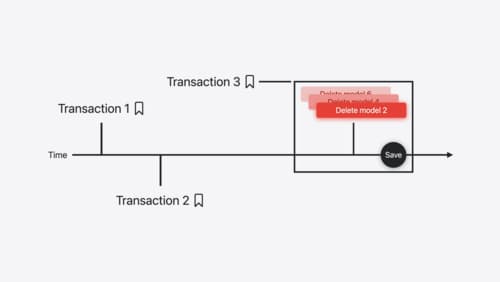How can I use swift data
Asked on 2024-07-31
1 search
To use Swift Data, you can follow these steps:
-
Import the Framework: Start by importing the Swift Data framework into your project.
-
Define Your Models: Use the
@Modelmacro to define your data models. This macro helps in creating the schema for your data.import SwiftData @Model class Trip { var name: String var startDate: Date var endDate: Date } -
Configure the Model Container: Use the
modelContainermodifier on yourWindowGroupto tell the view hierarchy about your model.@main struct MyApp: App { var body: some Scene { WindowGroup { ContentView() .modelContainer(for: Trip.self) } } } -
Querying Data: You can use queries to fetch data from the model container. For example, to fetch all trips:
@FetchRequest(sortDescriptors: [SortDescriptor(\.startDate)]) private var trips: FetchedResults<Trip> -
Custom Data Stores: If you need to use a custom backend, you can configure a custom data store. This is useful if you want to use a backend like SQLite, a remote web service, or JSON files.
let customStore = CustomDataStore(configuration: .init(url: customURL)) let container = ModelContainer(for: [Trip.self], store: customStore) -
History Tracking: Swift Data provides a history API to track changes in your data store, which is useful for syncing with remote services or implementing features like change badges.
let history = try container.history() for change in history { // Process changes }
For more detailed information, you can refer to the following sessions from WWDC 2024:
- What’s new in SwiftData
- Track model changes with SwiftData history
- Create a custom data store with SwiftData
These sessions cover various aspects of using Swift Data, including adopting it in your app, customizing the schema, using the history API, and creating custom data stores.

Platforms State of the Union
Discover the newest advancements on Apple platforms.

What’s new in SwiftData
SwiftData makes it easy to add persistence to your app with its expressive, declarative API. Learn about refinements to SwiftData, including compound uniqueness constraints, faster queries with #Index, queries in Xcode previews, and rich predicate expressions. Join us to explore how you can use all of these features to express richer models and improve performance in your app. To discover how to build a custom data store or use the history API in SwiftData, watch “Create a custom data store with SwiftData” and “Track model changes with SwiftData history”.

Track model changes with SwiftData history
Reveal the history of your model’s changes with SwiftData! Use the history API to understand when data store changes occurred, and learn how to use this information to build features like remote server sync and out-of-process change handing in your app. We’ll also cover how you can build support for the history API into a custom data store.
